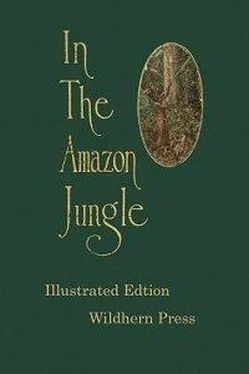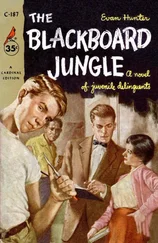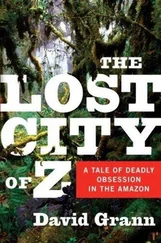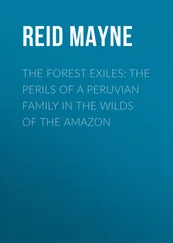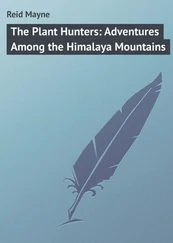Algot Lange - In the Amazon Jungle - Adventures in Remote Parts of the Upper Amazon River, Including a Sojourn Among Cannibal Indians
Здесь есть возможность читать онлайн «Algot Lange - In the Amazon Jungle - Adventures in Remote Parts of the Upper Amazon River, Including a Sojourn Among Cannibal Indians» весь текст электронной книги совершенно бесплатно (целиком полную версию без сокращений). В некоторых случаях можно слушать аудио, скачать через торрент в формате fb2 и присутствует краткое содержание. Жанр: Путешествия и география, Приключения про индейцев, на английском языке. Описание произведения, (предисловие) а так же отзывы посетителей доступны на портале библиотеки ЛибКат.
- Название:In the Amazon Jungle : Adventures in Remote Parts of the Upper Amazon River, Including a Sojourn Among Cannibal Indians
- Автор:
- Жанр:
- Год:неизвестен
- ISBN:нет данных
- Рейтинг книги:3 / 5. Голосов: 1
-
Избранное:Добавить в избранное
- Отзывы:
-
Ваша оценка:
- 60
- 1
- 2
- 3
- 4
- 5
In the Amazon Jungle : Adventures in Remote Parts of the Upper Amazon River, Including a Sojourn Among Cannibal Indians: краткое содержание, описание и аннотация
Предлагаем к чтению аннотацию, описание, краткое содержание или предисловие (зависит от того, что написал сам автор книги «In the Amazon Jungle : Adventures in Remote Parts of the Upper Amazon River, Including a Sojourn Among Cannibal Indians»). Если вы не нашли необходимую информацию о книге — напишите в комментариях, мы постараемся отыскать её.
In the Amazon Jungle : Adventures in Remote Parts of the Upper Amazon River, Including a Sojourn Among Cannibal Indians — читать онлайн бесплатно полную книгу (весь текст) целиком
Ниже представлен текст книги, разбитый по страницам. Система сохранения места последней прочитанной страницы, позволяет с удобством читать онлайн бесплатно книгу «In the Amazon Jungle : Adventures in Remote Parts of the Upper Amazon River, Including a Sojourn Among Cannibal Indians», без необходимости каждый раз заново искать на чём Вы остановились. Поставьте закладку, и сможете в любой момент перейти на страницу, на которой закончили чтение.
Интервал:
Закладка:
The bow which he used was of his own manufacture. It was about seven and a half feet long, very tough and straight, and made of Caripari wood. The shafts of the arrows were made of long straight reeds, the stalks of a certain species of wild cane. The detachable part of the arrow is a short but extremely hard piece of wood upon which is fitted an iron head with two barbs. When the point pierces the flesh this hard piece comes off, but remains attached to the shaft by a short stout cord. This allows the shaft free play so that it will not break during the struggles of the victim. Then there is a line attached to the head itself so that the hunter can handle the struggling animal or fish by means of it and of the shaft of the arrow. The whole contrivance is a marvel of ingenuity in meeting the conditions the Amazon hunter is called on to face. When the arrow struck this particular pirarucu , at close range, he made straight for the shore, hauling the canoe and its contents after him at considerable speed. We got tangled among the low branches and fought the fish in considerable danger of being overturned—and I should not at all care to be capsized on Lake Innocence.
Finally, we got our prize ashore. I sent the Indian to headquarters, telling him to go, as fast as he could and bring assistance so that we could get the fish home. I myself mounted guard over the carcass to see that neither the turkey buzzards nor the carnivorous mammals should destroy it. If we had left it alone for even a short time, we would have found, on our return, little to remind us of its existence. The Indian returned shortly with two men. They stuck a pole through the great gills of the pirarucu and in this fashion carried it to the settlement.
These waters contain great quantities of another and smaller fish known as the piranha , scientifically termed Serraselmus piraya . This is quite as much dreaded by the natives as the alligator, or even as the shark along the coast. Its ferocity seems to know no bounds. It will attack other fish and bite large pieces out of their fins and tails. Although it is not much larger than the herring it can make fatal attacks on man when in large numbers.
Mr. C.B. Brown in his work on Guiana gives the following account of this fish:
The piranhas in the Corentins were so abundant and were so ferocious that at times it was dangerous to go into the water to a greater depth than the knees. Even then small bodies of these hungry creatures would swim in and make a dash close to our legs, and then retreat to a short distance. They actually bit the steering paddles as they were drawn through the water astern of the boat. A tapir which I shot as it swam across the water had his nose bitten off by them whilst we were towing it to the shore. The men used to catch some of them for the sport of it, and in taking the hook from the mouth produced a wound from which the blood ran freely. On throwing them back into the water in this injured condition, they were immediately set upon and devoured by their companions. Even as one was being hauled in on the line, its comrades, seeing that it was in difficulties, attacked it at once.
I heard about these fiends but had no opportunity to witness their ferocity until one day, in crossing the river in a dugout, we wounded a wild hog that had also decided to cross at the same time and at the same place. The man with the stern paddle seized his machete as he saw the hog swimming close by the port-side of the canoe and stabbed it in the shoulder, intending to tow it ashore and have a luxurious dinner of roast hog. But his dream was never realised, for the piranhas which had tasted the blood, I suppose, came in large numbers and set upon the unfortunate hog. In a minute the water seemed to be boiling, so great was the activity of the little demons as they tore away pieces of the flesh until it was vanishing by inches. When we reached the other shore there was not enough left of the hog to furnish a single meal.
Later I learned that certain Indian tribes leave their dead in the river for the piranhas to strip the flesh from the bones. It is then customary to take the remaining skeleton and let it dry in the sun, after which it is rubbed with the juice of the urucu plant (the Bixa orellana ), which produces a bright scarlet colour. Then it is hung up in the hut and the Indians consider that a token of great reverence has been thus bestowed on the deceased.
Before leaving the subject of fish, I will mention another species, smaller than the piranha , yet, although not as ferocious, the cause of much dread and annoyance to the natives living near the banks of the rivers. In fact, throughout the Amazon this little worm-like creature, called the kandiroo , is so omnipresent that a bath-house of a particular construction is necessary. The kandiroo is usually three to four inches long and one sixteenth in thickness. It belongs to the lampreys, and its particular group is the Myxinos or slime-fish. Its body is coated with a peculiar mucus. It is dangerous to human beings, because when they are taking a bath in the river it will approach and with a swift powerful movement penetrate one of the natural openings of the body whence it can be removed only by a difficult and dangerous operation.
A small but hard and pointed dorsal fin acts as a barb and prevents the fish from being drawn back. While I was in Remate de Males the local doctor was called upon to remove a kandiroo from the urethra of a man. The man subsequently died from the hemorrhage following the operation.
Largely through the danger of the attack from this scourge, though perhaps not entirely, the natives have adopted the method of bathing in use. A plunge into the river is unheard of, and bath-houses are constructed so as to make this unnecessary. A hole about eighteen inches square is cut in the middle of the floor—built immediately above the water—through which the bather, provided with a calabash or gourd of the bread-fruit tree, dips water up and pours it over himself after he has first examined it carefully. The indigenous Indians, living in the remote parts of the forest, do not use this mode of protection, but cover the vulnerable portions of the body carefully with strips of bark, which render complete immersion less dangerous.
During my walks in the forest I often came across snakes of considerable length, but never found any difficulty in killing them, as they were sluggish in their movements and seemed to be inoffensive. The rubber-workers, who had no doubt had many encounters with reptiles, told me about large sucurujus or boa-constrictors, which had their homes in the river not many miles from headquarters. They told me that these snakes were in possession of hypnotic powers, but this, like many other assertions, should be taken with a large grain of salt. However, I will relate an incident which occurred while I lived at Floresta, and in which I have absolute faith, as I had the opportunity of talking to the persons involved in the affair.
José Perreira. a rubber-worker, had left headquarters after having delivered his weekly report on the rubber extracted, and was paddling his canoe at a good rate down the stream, expecting to reach his hut before midnight. Arriving at a recess in the banks formed by the confluence of a small creek called Igarapé do Inferno, or the Creek of Hell, he thought that he heard the noise of some game, probably a deer or tapir, drinking, and he silently ran his canoe to the shore, where he fastened it to a branch, at the same time holding his rifle in readiness. Finally, as he saw nothing, he returned to the canoe and continued his way down-stream.
Hardly more than ten yards from the spot, he stopped again and listened. He heard only the distant howling of a monkey. This he was used to on his nightly trips. No! there was something else! He could not say it was a sound. It was a strange something that called him back to the bank that he had left but a few minutes before. He fastened his canoe again to the same branch and crept up to the same place, feeling very uneasy and uncomfortable, but seeing nothing that could alarm him—nothing that he could draw the bead of his rifle on. Yet, something there was! For the second time he left, without being able to account for the mysterious force that lured him to this gloomy, moon-lit place on the dark, treacherous bank. In setting out in the stream again he decided to fight off the uncanny, unexplainable feeling that had called him back, but scarcely a stone's throw from the bank he had the same desire to return,—a desire that he had never before experienced. He went again, and looked, and meditated over the thing that he did not understand.
Читать дальшеИнтервал:
Закладка:
Похожие книги на «In the Amazon Jungle : Adventures in Remote Parts of the Upper Amazon River, Including a Sojourn Among Cannibal Indians»
Представляем Вашему вниманию похожие книги на «In the Amazon Jungle : Adventures in Remote Parts of the Upper Amazon River, Including a Sojourn Among Cannibal Indians» списком для выбора. Мы отобрали схожую по названию и смыслу литературу в надежде предоставить читателям больше вариантов отыскать новые, интересные, ещё непрочитанные произведения.
Обсуждение, отзывы о книге «In the Amazon Jungle : Adventures in Remote Parts of the Upper Amazon River, Including a Sojourn Among Cannibal Indians» и просто собственные мнения читателей. Оставьте ваши комментарии, напишите, что Вы думаете о произведении, его смысле или главных героях. Укажите что конкретно понравилось, а что нет, и почему Вы так считаете.
